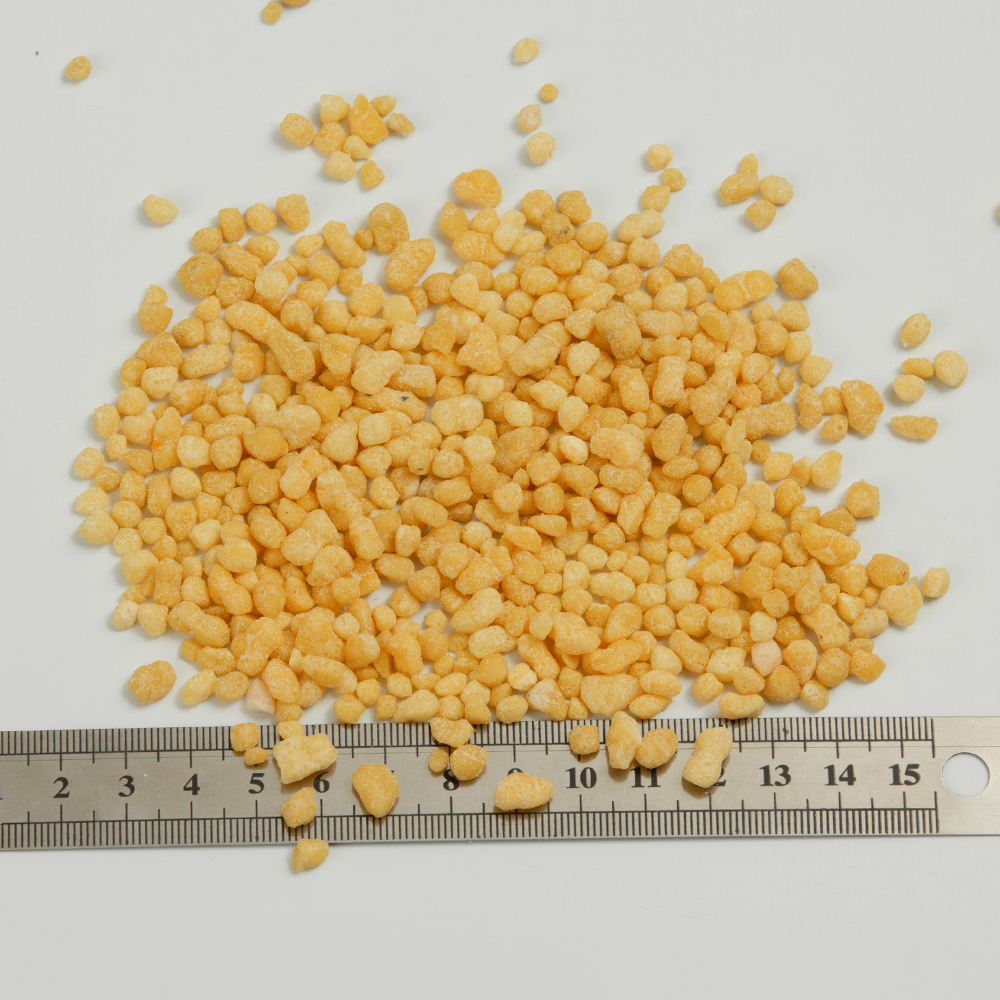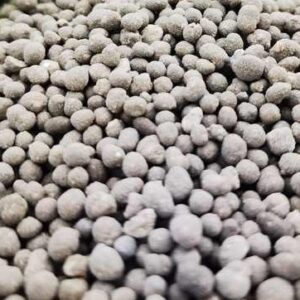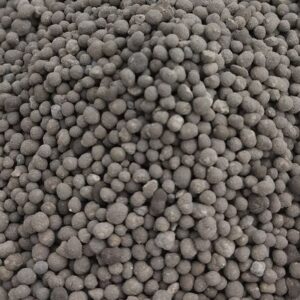Description
Diammonium phosphate (DAP or diammophos) is a complex, highly concentrated, granular mineral fertilizer with excellent physical properties. It contains two main nutrients in its composition — 18% nitrogen (N) and 46% phosphoric pentoxide (P2O5) or in total 63% of the active substance. It is obtained through a reaction between phosphoric acid (P2O5) and ammonia (NH3). It is incompatible with other alkaline chemicals due to the fact that its ammonium ions turn into ammonia when they get into the medium with higher рH. This product of high quality is easily input into the soils, it is highly soluble, it is not hygroscopic and has a granular form with equal in size granules, which are evenly dissipated along the soil surface.
Diammonium phosphate is used for the pre-sowing fertilization of winter and spring crops under irrigation conditions. It is suitable for fertilization of soils rich in potassium. Because of the fact that it is water-soluble, it has the properties of fast-acting phosphorus fertilizer, and the low mobility of the phosphorus in the soil allows its use for main, stocking as well as periodic fertilization. No additional pre-sowing fertilization with nitrogen is needed in autumn crops.
It may be applied directly into the soil with the help of conventional equipment for spraying.
It is stored in well-ventilated, cool and dry storehouse premises which do not allow for moistening or direct sun heating.
Heating, leaving it in the open air, mixing it with water or with strong bases and with sodium hypochlorite should be avoided.
Composition: |
|
| Items | Standard |
| Appearance | Yellow or Brown Granular |
| N /% | 17.00 |
| P /% | 20.00 |
| K /% | 0.00 |
| S /% | 1.00 |
| Ca /% | 0.00 |
| Mg /% | 0.00 |
| Size | 1-5 mm |
Application: |
|
| Period | Autumn, Spring |
| Method | #1.Main The main way to fertilize. Uniform distribution of fertilizer elements on the soil surface, maintaining roughly the same distance between solid fertilizer granules or liquid fertilizer drops. #2.During planting (of tubers) Fertilizing simultaneously with crop seeding. The main purpose is to provide effective plant nutrition at the initial stages of development and growth. |
| Crops | All crops |
| Soils | All soils |









